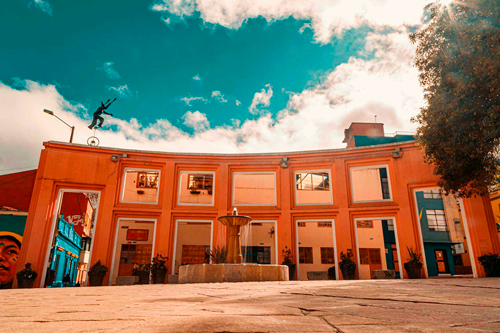
Felipe Peláez: Un sueño llamado 'Sinfónico'
Felipe Peláez will celebrate two decades of his musical career with an unprecedented show named Un Sueño Llamado Sinfónico (A Dream Called Symphonic) in Bogotá. This event is expected to be a landmark in the Colombian artist's career, mixing the richness of symphonic music with the emotive rhythm of the vallenato.
More information at: https://tuboleta.com/eventos/detalle/felipe-pelaez-un-sueno-llamado-sinfonico/8271495890
KANNY GARCIA TOUR 2024
Bogotá welcomes Puerto Rican artist Kanny Garcia with her Garcia Tour. She will perform songs from her latest album, "Garcia." The album has 12 songs and collaborations with world-renowned artists such as Christian Nodal, Carla Morrison, Carín León and Young Miko.
Bogotá LGBT Pride March
From the Renaissance Park in Los Mártires, people from the LBGTI community will join the 28th version of the Bogotá Pride March for full citizenship under the motto 'Nothing to cure, united in memory.'
The meeting point will be at 10:00 a.m., and the march will start at 2:00 p.m., heading to the Bolívar Square.
Great Farmers' Market
On June 6 and 7, the Mayor's Office of Bogota invites all citizens to the Bolívar Square to commemorate National Peasant's Day and celebrate 20 years of Bogota's Peasant Markets under the motto: 'Whoever sows it is the one who sells it.' A massive attendance is expected from the capital's inhabitants so that they can buy their market from the producers.
Manuel Medrano in concert
The Movistar Arena will host Manuel Medrano on November 22, the Colombian singer and songwriter and two-time Latin Grammy winner. His fans will enjoy his greatest hits and also some of the songs from his latest album 'Perfecto.'
The 'Manuel Medrano in concert' tour has enthralled his fans, attracting massive attendance in all his shows during the last year, after having performed in Madrid and Barcelona.
Circus and theater for children at the National Museum
To celebrate Family Month, we present Kivy Karavan Cirkus. It is a theater and circus play where children can meet Wilfredo Fu, Yánqay, and Dominik, three cousins who, after traveling around the world, arrive at Grandpa's circus tent that is about to close.
We are waiting for you and your family this Sunday, June 9, at the National Museum of Colombia at 11:30 a.m.
This is Real III: Latin Hip Hop Festival!
The 'This Is Real III' festival is coming and will be more powerful than ever. At the Movistar Arena, there will be some of the best exponents of hip hop, such as Bubaseta, Alika, Akapellah, Lee Eye, Mad Lion and Edley Shine, Kazu, Arianna Puello, Mad One, and Askoman.
You no longer have to wait to see the greatest exponents of this genre and live an otherworldly experience next June 14th.
Luli Pampín arrives in Bogotá
Directly from Spain, the renowned children's artist Luli Pampín arrives to cheer up the kids of the capital city with an incredible show that they will enjoy as a great adventure from the hand of an artist who conquered their hearts.
More information at https://movistararena.co/evento/luli-pampin-bienvenidos-bogota/
La Casona de la Danza Dance Workshops
Locals will have free admission to participate in dance workshops in musical genres such as voguing, tango, and urban dance. Additionally, there will be classes on yoga, dance therapy, self-care, and acting, among others.
More information at: https://bogota.gov.co/que-hacer/cultura/talleres-gratis-de-baile-en-bogota
¡Vive la salsa!
The excitement among salsa lovers increases with the incredible lineup of artists that will be performing at the ¡Vive la salsa! Festival of Festivals. The event will take place for the first time at Simon Bolívar Park on June 21 and 22.